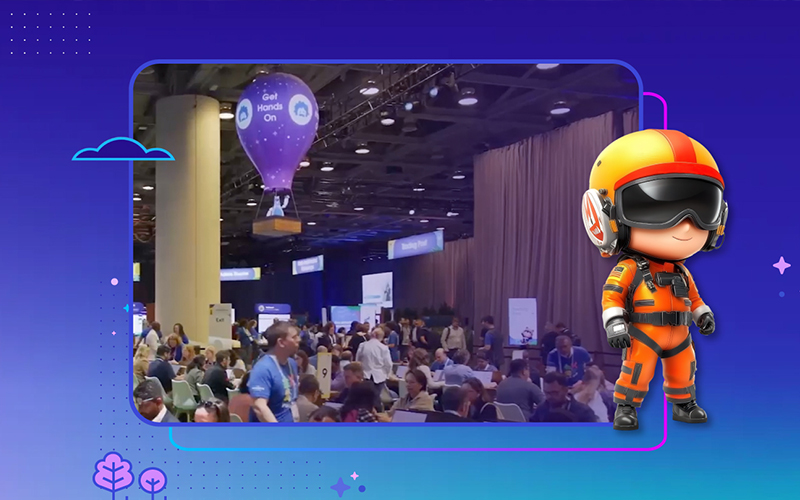
On a recent webinar hosted by Insight Venture Partners, Sean Hogan, Senior Director of Alliances at Nintex, and CodeScience CEO Brian Walsh took a deep dive into the value and challenges of rolling out an ISV partner ecosystem, the go-to-market strategies for ecosystems, and the technology challenges associated with them.
If you want to watch the webinar for yourself, you can access the recording and slidedeck here. With so much great information to unpack, we thought we would take an even closer look at the topics discussed and expand on some key insights.
Systems of Record and Systems of Engagement
Ecosystems aren’t appropriate for every company out there. To have an ecosystem that builds around your product, there are two areas that much of today’s technology can be separated into: Systems of Record (SoRs) and Systems of Engagement (SoEs).
SoRs, generally speaking, are databases and application stacks. There are three major SoRs:
- Customer Relationship Management — CRM (customers)
- Human Capital Management — HCM (employees)
- Enterprise Resource Planning — ERP (assets)
However, because the world is becoming increasingly digitized in all aspects, many other SoRs are growing such as documents (OpenText, Dropbox, Box, Google Drive, etc.) and code (GitHub, Bitbucket, VSTS, etc.).
As for SoEs, this is where humans spend most of their time. SoEs interface between the user and SoRs. Traditional, long-standing SoEs like terminals and PCs are being augmented by more modern systems, such as browsers (Chrome, Firefox, IE), live chat (Slack, Microsoft Teams, Hipchat) or voice (Alexa, Siri).
SoRs and SoEs play a large role in building a defensible ecosystem, but if your product is not one of these, there are still opportunities to work with multiple ecosystems and get the same value as the owner.
Traditional Moats
It is extremely important for SaaS companies to build defensible moats around every aspect of their operation to ensure competitors can’t replace them. The earlier you can start building moats, the better. Brian says in the webinar, “one could argue that SaaS is really just databases in the cloud.” Meaning, moats are one of the main differentiators between you and your competition.
Below are the traditional moats that have existed for an extended period of time, but some are starting to become less effective.
- Economies of Scale
- Network Effects
- Deep Tech
- IP
- Trade Secrets
- High Switching Costs
- Brand/Customer Loyalty

With the emergence of ecosystems, SaaS organizations are presented with the opportunity to build long-standing barriers to entry. Having multiple moats that can feed of off one another creates a virtuous cycle, leading to even stronger defensible positions down the road.
Why ISV Ecosystems
The biggest difference between market leaders and followers are the ecosystems that the leaders have built and surrounded themselves with. While SI ecosystems shouldn’t be dismissed (and are especially important to enterprise software companies), we believe ISV ecosystems have the best chance of building multiple layers of defensibility.
When broken down, an ISV ecosystem has 5 major characteristics for other ISVs to build upon that justifies the expense, time, and effort that is needed to form it.
1. Total Cost of Ownership (TCO)
As providers of products, you have to not only think of the cost of your licenses, but also what it takes to implement the product and the change management to learn the product. When looking at an enterprise company, this can be a significant portion of TCO.
If consultants are forced to create customizations and solutions to fill in functional gaps of your product, that raises TCO over and over. For example, if every time a customer wants to create an NDA and merge it together with data from their CRM, an SI has to be engaged, increasing TCO drastically. If the document has to be changed later, a consultant again has to be contacted.
Providing an ISV ecosystem lowers TCO by decreasing the number of SI engagements. This is a win for both you and the customer.
2. Attrition
Churn is the number one driver of lifetime value, where the money is in SaaS, so lowering it is the key to success. Brian spoke about studies that have been done where installing five or more applications can lower attrition greater than 70%.
Moving from just a system that stores records to a system where business process take place greatly increases your chances of being utilized for a long time. An example was given of working with enterprise IT companies where no one knows where the software being used comes from, but everyone leaves it in place and doesn’t change it because it is adopted into their business practices and operations.
3. Defensibility
Defensibility is a major key to ISV ecosystems. If products built within your ecosystem don’t exist as a package from competitors, customers will have an extremely hard time jumping ship as it adds to TCO.
For instance, if a Salesforce customer has their electronic signature, document generation, and project management software bundled with their use of the platform, they are more likely to stay with Salesforce due to the high cost of changing platforms.
4. Capital Efficiency
An often forgotten — but key — characteristic is Capital Efficiency. ISV ecosystems make organizations much more capital efficient by transferring R&D investments from the SoR/SoE to the ISV. There is a big investment in your SoR or SoE in the early stages, but it pays off handsomely down the road.
Brian brought up that it is estimated just over $1 billion per year is invested in building on Salesforce by the ecosystem, not Salesforce. So Salesforce is able to repurpose all of that money and put it back into sales and marketing efforts (which also increases the network effect of attracting more ISVs!).
5. Specialization
As a SaaS company, there will inevitably be gaps in your feature set. Having an ecosystem allows you to bring in specialists from the different areas that are lacking and shore them up.
All five characteristics help to accomplish the goal of every business — increase value. Lowering churn increases lifetime value, which increases the cost of customer acquisition you can handle. Ecosystems can be a great driver of value for your organization as you look for future funding or enter into public markets.
Go-to-Market Strategies
There are three main strategies Sean Hogan covered in regards to ecosystems: build side, sell side, and extension. All three strategies cannot be a side project, they need a devoted team to be successful.
The build side focuses on creating a platform for others to build on — think Salesforce and ServiceNow. The extension strategy can be thought of as OEMing or reselling — i.e., building programs to extend platforms and putting teams in place to work with the sell side of ISVs.
The strategy that Hogan focused on was sell side. In this strategy, the technology is provided in a royalty or rake based motion to other ISVs that want to extend their offerings. The three typical business models for sell side are:
- Free
- Referral
- Reseller
As mentioned before, in order to have a successful go-to-market strategy, a great team is needed. This team must recruit and manage the partners that are going to be brought on, along with getting the models in place to begin recruiting and managing the partners. Strategic marketing is essential as well. Decide which partners need a marketing plan moving forward to enable significant revenue to be generated.
Enablement is present throughout the entire process of creating your go-to-market strategy — both internally and externally. You must be ready to invest in your team and surrounding people.
Platform Levels
You can’t build an ecosystem or go-to-market strategy without also assessing if your technology is up to par for partners to depend on you. Brian breaks platforms into 3 different levels.
Level 1
A level 1 platform is centered around APIs and doesn’t have a huge overhead cost to start. There is not a human level of interaction, so it isn’t providing UI elements. It is also not interacting from a UX perspective with another system as it is fully based off of APIs. This is the most basic platform.

Level 2
This platform level provides more value to everyone involved. It has a structured environment, or a frame, where the ISV can have placement within the SoR or SoE. With this level comes some security concerns, and as the host, you must be able to handle them.
While more advanced than level 1, there are still limitations — as an ISV, the functionality you can provide to end users is severely limited.

Level 3
Level 3 should be the goal of every platform — this SaaS platform is capable of running not only data, but also providing custom front-end UI where an ISV can build out their own engagement, user experience, and user interface within a SaaS product.
Very few organizations have created a level 3 platform at scale. Salesforce and ServiceNow have both accomplished it, and Twilio looks to be very close.

Here are the starting point of requirements for a level 3 platform as well:

If you’re built on Salesforce or ServiceNow, you already have all of this underlying infrastructure and you can take advantage of it immediately to build out your ecosystem. If you’re built natively, it is essential to think through these requirements in order to guide your path to level 3. However, in both cases, you should not wait until level 3 to begin building your ecosystem.
ISV ecosystems are a great accelerator for your business as they are one of the most defensible strategies you can put in place for your business. There is no specific stage or ARR level you must reach to start building out your ecosystem; just be sure to have product-market fit and a sizeable enough base for people to build on top of you.
CodeScience is an expert at building out ecosystems and the only Master PDO in the Salesforce AppExchange. Like what you learned from this blog but can’t complete the whole job on your own? Contact us today and we’d be happy to help!


